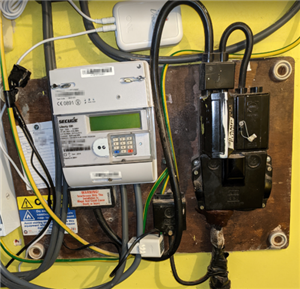I have been asked to replace a consumer unit. All seems fine, and the incoming earth seems to be on the sheath of the incomer, so, TN-S. But, it says TN-C-S on the previous EICR. Did that spark make a mistake or is there something here I'm missing? Also, do we presume the Line and Neutral are in that cable going to the meter??? I hope so… Thx in advance.

